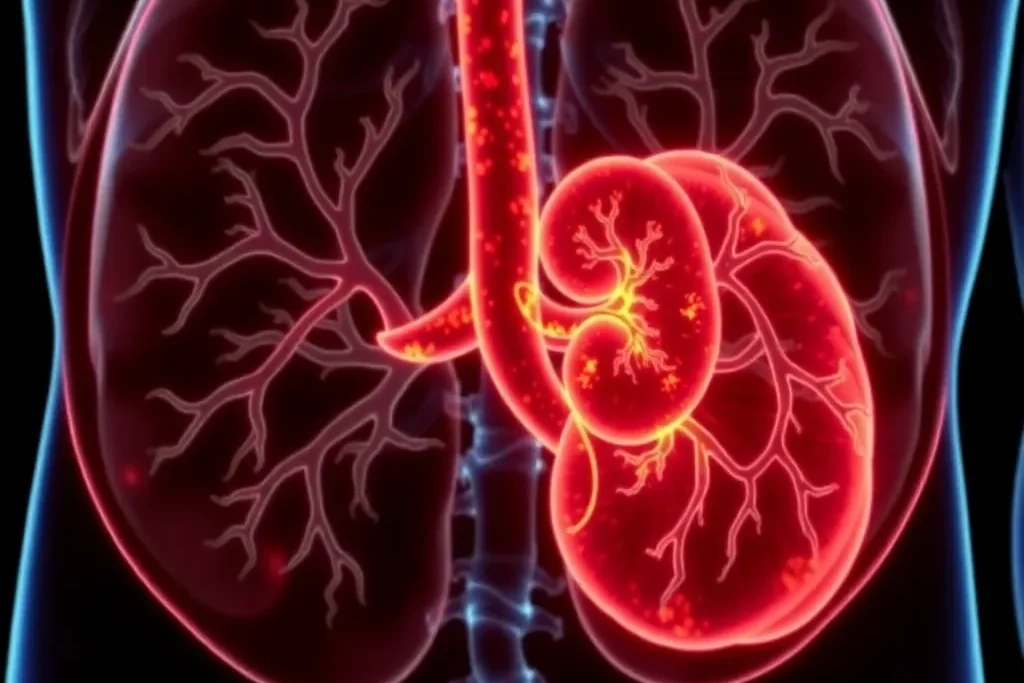
Renal cell carcinoma (RCC) is a common and often aggressive form of kidney cancer, with a significant impact on patient outcomes. However, a groundbreaking study has revealed a novel approach to predicting the prognosis of RCC patients, paving the way for more personalized and effective treatment strategies. The research, led by a team of medical experts, explores the use of two key biomarkers – the systemic immune-inflammation index (SII) and the prognostic nutritional index (PNI) – to forecast the survival and recurrence rates of RCC patients. This comprehensive analysis not only identifies these markers as powerful predictors of patient outcomes but also establishes a highly accurate nomogram model to guide clinical decision-making. With its potential to revolutionize the management of this challenging disease, this study represents a significant step forward in the fight against renal cell carcinoma.
Understanding the Complexities of Renal Cell Carcinoma
Renal cell carcinoma (RCC) is a type of kidney cancer that originates in the lining of the renal tubules, the small tubes within the kidneys responsible for filtering waste and excess water from the blood. As one of the most common malignancies of the urinary system, RCC accounts for approximately 2-3% of all adult cancers. While advancements in surgical and medical treatments have improved outcomes, RCC remains a formidable challenge, with a significant risk of local recurrence and distant metastasis.
Exploring the Role of Inflammation and Nutrition in RCC Prognosis
The current study delves into the complex relationship between the patient’s immune and nutritional status and the prognosis of RCC. The researchers focused on two key biomarkers: the systemic immune-inflammation index (SII) and the prognostic nutritional index (PNI).
The SII is a comprehensive marker that combines the levels of circulating neutrophils, platelets, and lymphocytes, providing insights into the patient’s systemic inflammatory state and immune response. Meanwhile, the PNI is calculated based on serum albumin levels and lymphocyte counts, reflecting the individual’s nutritional and immune status.

the Predictive Power of SII and PNI
The study involved 210 RCC patients who underwent surgical treatment at a hospital in China. The researchers meticulously analyzed the relationship between the preoperative SII and PNI values and various clinicopathological factors, including tumor size, necrosis, surgical approach, and cancer stage.
The findings were striking: patients with higher preoperative SII values had a significantly lower 5-year overall survival rate compared to those with lower SII levels (64.5% vs. 89.0%). Conversely, patients with lower PNI values experienced a much poorer 5-year survival rate than those with higher PNI (43.4% vs. 87.9%). These results clearly demonstrate the prognostic significance of these two biomarkers in predicting the outcomes of RCC patients.

Fig. 2
Constructing a Robust Predictive Model
Building on these findings, the researchers developed a comprehensive nomogram model to predict the prognosis of RCC patients. This model incorporated not only the SII and PNI values but also other crucial factors, such as tumor size, necrosis, surgical approach, pathological type, C-reactive protein (CRP) levels, cancer stage, and Fuhrman grade (a measure of tumor cell differentiation).
The nomogram model exhibited excellent calibration and discrimination, with a concordance index (C-index) of 0.918, indicating its high accuracy in predicting patient outcomes. The model’s predictive efficiency was further validated through a receiver operating characteristic (ROC) curve analysis, which yielded an area under the curve (AUC) of 0.953, reinforcing its clinical utility.

Table 1 Comparison of clinicopathological features of the two groups [n(%)]
the Potential for Personalized Care
The significance of this study lies in its potential to revolutionize the management of renal cell carcinoma. By incorporating the SII and PNI as reliable prognostic biomarkers, clinicians can now better assess the individual risk profiles of RCC patients and tailor their treatment strategies accordingly.
This personalized approach could lead to more informed decision-making, allowing for earlier intervention in high-risk patients and the optimization of follow-up plans. Moreover, the insights gained from this research may also contribute to the development of novel targeted therapies and immunotherapies, further enhancing the arsenal against this challenging disease.
Paving the Way for Future Advancements
While this study represents a significant stride in the field of RCC prognosis prediction, the researchers acknowledge the need for further validation and expansion of their findings. Larger-scale, multi-center studies will be crucial in solidifying the clinical utility of the SII and PNI as prognostic markers, as well as refining the predictive nomogram model.
Additionally, exploring the underlying mechanisms by which these biomarkers influence RCC progression and metastasis could uncover new avenues for therapeutic interventions. As the scientific community continues to unravel the complexities of renal cell carcinoma, this research serves as a beacon of hope, inspiring further advancements in the fight against this formidable disease.
Author credit: This article is based on research by Weiming Ma, Wei Liu, Yang Dong, Junjie Zhang, Lin Hao, Tian Xia, Xitao Wang, Conghui Han.
For More Related Articles Click Here
